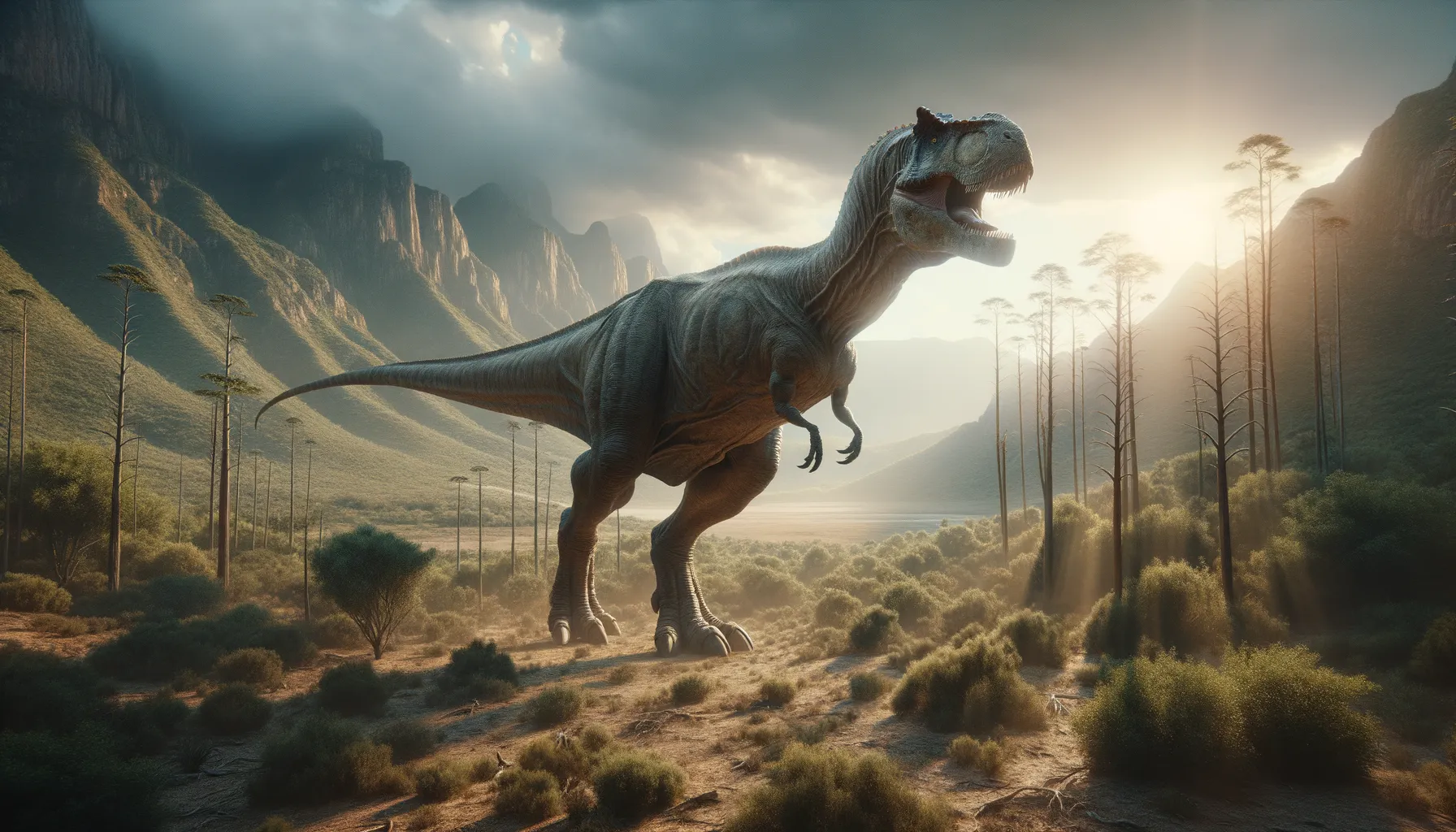
Ledumahadi
An ancient giant treads the South African lands.
Period
Jurassic
Length
Up to 9 meters long.
Height
Approximately 4 meters tall at the shoulders.
Weight
Around 12 metric tons.
Ledumahadi was a giant dinosaur species that lived about 200 million years ago. This massive creature was a close relative of sauropod dinosaurs, known for its enormous body size and strong limbs. It likely roamed what is now South Africa, navigating the diverse landscapes of the Jurassic period. Its discovery has shed light on the evolution and adaptation of early large herbivores, indicating a complex and dynamic ecosystem.
Diet
Ledumahadi was herbivorous, primarily feeding on plant material. Its diet likely consisted of leaves, ferns, and other vegetation available during its time. Its large size suggests it consumed vast amounts of plant matter to sustain its energy needs.
Hunting
As a herbivore, Ledumahadi did not hunt other animals. Instead, it would have foraged for plant material, using its size to reach vegetation that smaller dinosaurs couldn't access. Its feeding behavior involved stripping foliage with its powerful jaws.
Environmental challenges
Ledumahadi faced various environmental challenges such as changing climates and the need to find sufficient food sources. The Jurassic period was marked by significant geological activity, which may have affected local ecosystems. Competing with other large herbivores for resources would have been a constant challenge. Predation, although limited due to its size, would still pose a threat from larger carnivores.
Speed
Probably walked at a slow pace due to its size.
Lifespan
Estimated to live for several decades.
First discovery
Discovered in South Africa in 2012.
Fun Facts
- Ledumahadi mafube lived about 200 million years ago during the Early Jurassic period.
- Its name means 'a giant thunderclap at dawn,' which reflects its impressive size and early age in dinosaur history.
- Ledumahadi was discovered in South Africa, making it an important find for understanding early dinosaur life on the supercontinent Gondwana.
- This dinosaur is considered one of the largest land animals at its time, weighing around 12 tons, roughly the mass of two African elephants.
- Unlike many other massive dinosaurs, Ledumahadi walked on all fours with a unique half-bent posture.
- It belongs to a group known as sauropodomorphs, which are ancestors to the legendary long-necked sauropods.
- Ledumahadi's discovery has helped scientists learn more about the evolution of gigantism in dinosaurs.
Growth and Development
Ledumahadi is thought to have experienced rapid growth, typical of many large dinosaurs, reaching maturity within a few decades. Its development involved significant skeletal changes, adapting to support its massive weight. Juveniles likely had different feeding and social behaviors compared to adults as they grew.
Habitat
This dinosaur inhabited a region that was rich in diverse plant life, providing ample food resources. The area was likely a mix of forested regions and open plains, supported by rivers and lakes. The environment provided both feeding opportunities and places to take refuge from predators.
Interaction with other species
Ledumahadi would have shared its habitat with a variety of other dinosaur species. These interactions would have been both competitive, as they vied for food, and cooperative, possibly forming herds with other herbivores for protection. It likely had few predators due to its size, but young individuals may have been at greater risk.
Natural lifespan
Ledumahadi is believed to have lived for up to 70 or 80 years naturally.
Reproduction
This dinosaur is thought to have laid eggs, like many other large herbivorous dinosaurs. Nesting sites would have been closely guarded, with numerous eggs laid at one time. The young were relatively independent shortly after birth but would be vulnerable to predation.
Social behaviour
Ledumahadi may have formed herds or loose social groups, which could provide mutual protection. Communication would have likely played a key role in maintaining social bonds. Its social interactions would have involved displays or movements to assert dominance within the group.
Fossil locations
Fossils of Ledumahadi have been primarily found in South Africa. The discovery site has contributed significant insight into the diversity of early Jurassic dinosaurs. These fossils help us understand the distribution and adaptation of early giants during this period.
